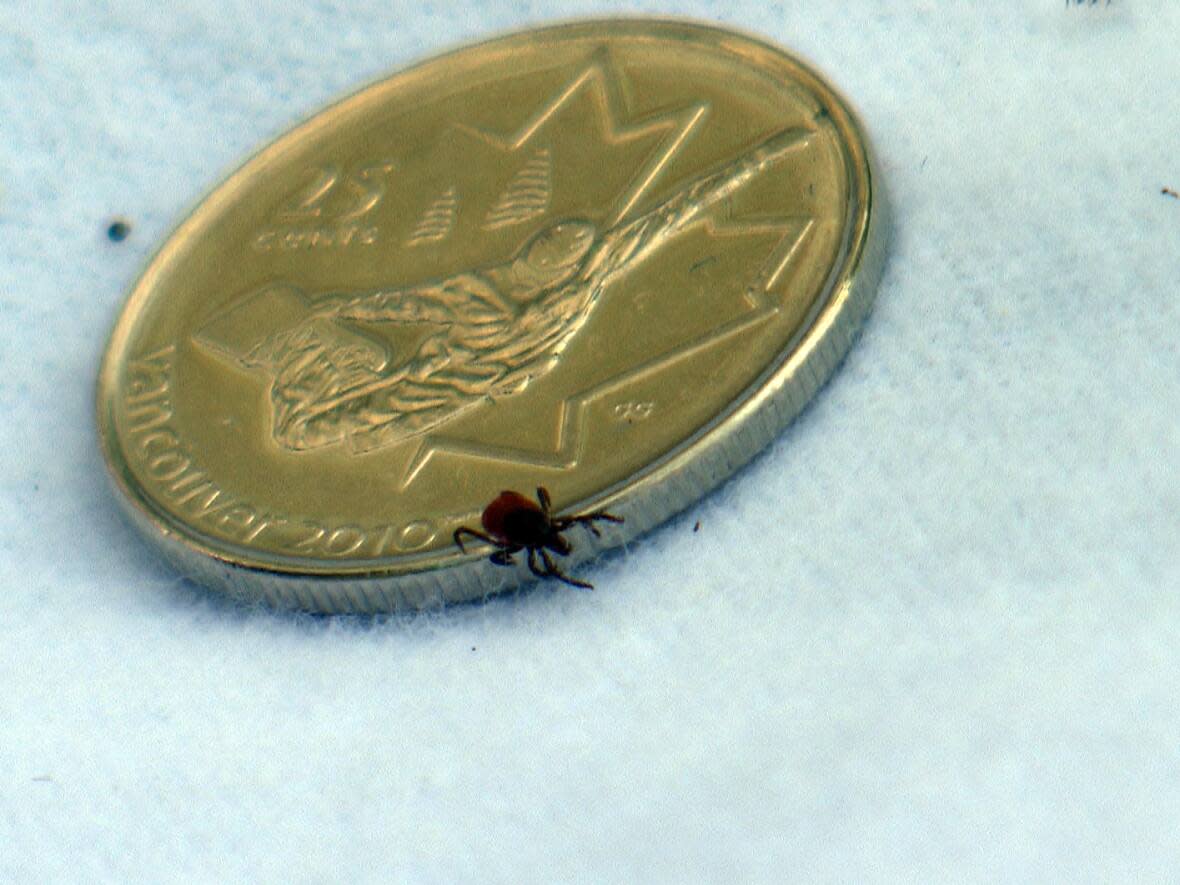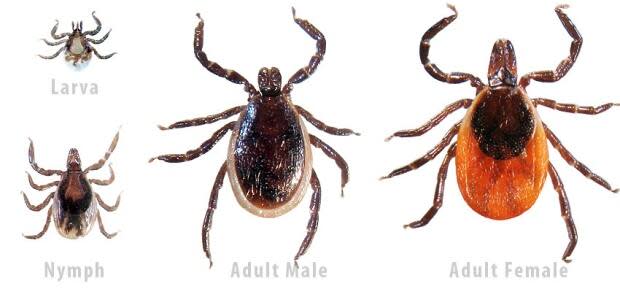Now that spring is here, so are ticks. Here's what Quebecers need to know

As soon as the weather in southern Quebec starts to get milder, with just a few consecutive days above zero, black-legged ticks are a threat.
And they can be lurking anywhere outdoors. It's not just something to worry about when you're out frolicking at the farm or marching up a mountain.
They can be in your own backyard, and they can transmit diseases like Lyme — an illness that is on the rise in the province as the tick population continues to grow.
"This is a great time of year to start doing prevention," said Jade Savage, an entomology professor at Bishop's University in Sherbrooke. "All it takes is a couple days of rain and ticks can start being active."
She launched eTick.ca a few years ago in collaboration with Quebec's public health institute (INSPQ) and the Public Health Agency of Canada. It now serves the entire country, allowing people to report and identify ticks they find simply by uploading a photo.
The tool allows scientists to keep track of the types of ticks that are being found, and how many. The black-legged tick, or deer tick, make up more than half of submissions to eTick in Quebec, she said.
Right now, most of the submissions are coming from the Eastern Townships, Montérégie and the Montreal region, she said.
Tick-bite prevention is key
Ticks can also carry anaplasmosis, but Savage explained, the prevalence of tick-borne diseases varies. Not all black-legged ticks carry anaplasmosis or Lyme, she said, and the percentage of ticks carrying these bacteria can even fluctuate in an area year by year.
Lyme disease infections are not increasing at an alarming rate in Quebec, but people should not downplay the importance of tick-bite prevention and should remain vigilant during spring and fall, when ticks are most active, Savage said.
Savage said most Lyme disease infections are acquired in the spring, because young ticks are in the nymph stage and are much harder to spot on the body than adult ticks.

According to Quebec public health, nymph ticks often go unnoticed, and they are most active during the spring and summer months. Adult ticks are easier to spot and more active in the fall.
It is important to take measures to prevent tick bites, such as wearing protective clothing, using insect repellent and performing regular tick checks after spending time outdoors in wooded or grassy areas, public health says.
In addition, Savage added, people should not assume that ticks are present only in rural areas. Activities such as gardening and yard work can increase the risk of tick bites, even in cities, she said.
Increase in awareness, testing
Public health data shows there were 495 reported Lyme infections in 2022, with 259 of those in the Eastern Townships, 103 in Montérégie and 64 in Montreal.
But that doesn't mean each infection was caught locally. In Montreal, for example, 24 patients believe they were bitten outside of the province and four others didn't know where they caught it.
By comparison, there were 125 cases reported in 2014. That number has steadily risen in the years since. There was a significant drop in cases in 2020 when travel and other restrictions were in place, and then 709 cases were reported in 2021.
Awareness among doctors and patients has also increased and so has access to testing. This likely plays a role in the increased number of detected infections, said Marion Ripoche, a scientific advisor with the province's health institute (INSPQ).
But the data still indicates the tick population and number of Lyme infections is increasing regardless, Ripoche.
She said there is an increasing number of Lyme disease cases north of the Eastern Townships and Montérégie regions. With climate change, there are examples of animals like deer moving further north, carrying the parasitic arachnids with them.
Will situation continue to worsen?
Ripoche said it is hard to predict if ticks will continue moving north, spurring an increase in tick-borne illnesses, because there are a number of factors to consider.
For example, people may adapt to prevent infection or ticks may not be able to thrive in northern climates, she said.
Meanwhile, Quebec health officials have been upping the effort to detect and treat Lyme disease. Five clinics have opened to offer services for both Lyme disease and long COVID.
A spokesperson for public health said the two diseases present comparable long-term symptoms.

So far, 341 patients are being treated at these clinics. There are two in Montreal and one in Sherbrooke. The others are in the Lower St. Lawrence and Lanaudière regions.
Back in May of 2022, Health Minister Christian Dubé said 15 Lyme-COVID clinics would open. A budget of $20.5 million was earmarked for the cause.
"Before deploying other clinics, it will be necessary to develop the expertise of clinicians and doctors who will take care of citizens suffering from Lyme disease in its chronic form," said Marjorie Larouche, public health spokesperson in a recent email to CBC News.
"For the initial phase of Lyme disease, services are currently available through pharmacists and family physicians."
Quebec pharmacists in high-risk area have also been authorized to treat people who suspect they have been bitten by a black-legged tick, which has stayed in contact with the skin for at least 24 hours.
Quebec public health has published information online about tick bite prevention and treatment — how to recognize bites and what to do if you find a tick on your skin.


